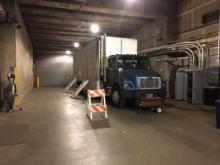6 Things to Consider when doing REMI Productions

REMI Stands for "Remote Integration" and is a concept that has been developed and worked on for the last three years by various networks and only recently gained popularity due to the recent pandemic. We are experts at REMI production and have developed our own systems and procedures that help make REMI productions smooth.
First lets explain why clients would want to use REMI production...
- Clients gain additional cash savings than traditional remote production as most travel is eliminated
- Crews can operate in a familiar environment and workflow. Repetition is key... Using the same method and studio to operate allows a consistent product creates a better product.
- The equipment is already installed, operational and working in a studio.
- Announcers can stay on site, not travel on-site.
- Safer: With pandemics, REMI's can help separate people and keep your crew safer with better.
- Engineers on site have fewer things to work on on-site. Using KISS! (Keep It Simple Studio!)... Engineers have more time and resources to focus on camera operators, transmission, and audio. Fewer moving parts, means a more successful show, and no need for a E2 (Second Engineer) to make the show a success.
Now lets explain the things a company must consider before booking one of our REMI Solutions:
- Internet is a MUST!: Good stable Internet is a requirement to transmit. Using a website like speakeasy.net to test not only the download speed but the upload speed, in addition to testing the health with other various software, we can see the health of the network. Since we are transmitting, upload speed is the important number to consider. It will determined the CODECS, number of transmit feeds, and bit-rate the encoders are set at for the event.
- Transmission Method: There is a plethora of technology available from LiveU encoders, our proprietary H.265 HEVC encoder, LTN Connectivity and more. Choosing the right solution not only saves you money, but also determines the reliability. Some networks also have strict requirements about which encoders are acceptable and "Broadcast Quality" for their network. We can carefully help you navigate the correct choice and combination of network/equipment topography for the event.
- Audio Encoding Method: Unless you are producing the "Charlie Chaplin Look-a-like Contest", you must have audio to accompany the video. Two popular methods exist, Embedding the audio alongside the HDSDI feed down into the encoder or using a DANTE or MADI to IP solution. Both have its drawbacks and advantages, but the main thing to note is having a redundant solution in case a malfunction happens. Duplicating the audio signals in a redundant fashion can save headache during the production.
- Intercom Connectivity: Talking to your camera operators and other support staff on site is an important thing to consider. Depending on the intercom systems available there are several solutions available including Unity Intercom which can connect multiple channels and people to your event, even by cell phone if needed in certain situations. We can walk you through the different solutions and help you decide the best intercom solution for your event.
- GPI and Tally: This may be necessary for your camera operators to know if they are are. Also software exists where you can preset a tally delay (since the transmission has a selectable delay time) to prevent the operator from swish-panning or making vast adjustments while inadvertently on-air. GPIO has many functions in triggering devices, triggering master control commands and more. Depending on your workflow and needs, we can help you make the right decision.
- The "Plan-B": Creating a solid REMI solution requires the "what-ifs" and "plan-b", and maybe "plan-c". Engineers must be well versed in many options including on-site graphics, on site line cut in an emergency, incase of internet failure, studio failures, etc. If the truck becomes primary, then care must be exercised to have an alternate transmit path. A separate encoder can be used to transmit to your master control or final endpoint or streaming destination. Graphics and replay can also be accomplished on site in an emergency fashion as well. Finally another thing we recommend is in the event of a hiccup or event happening on site that prevents cameras from getting the desired shot is to have cover or safety video saved on the video playback or replay computer.
We hope these ideas and considerations can help you in choosing the right REMI provider. We are glad to help you along with your journey, providing much more than a conventional television truck for your next event. If you have any questions, feel free to reach out to us!
